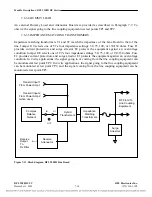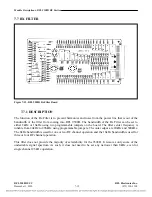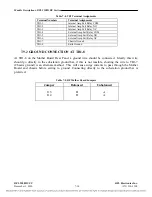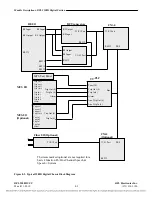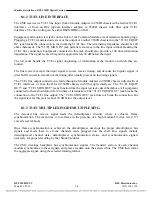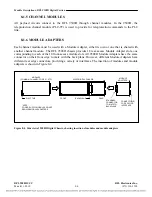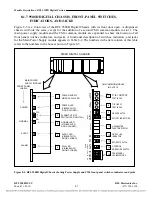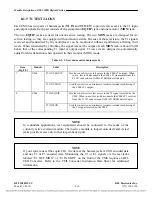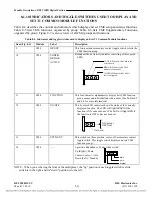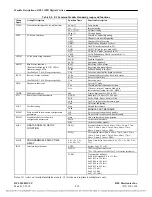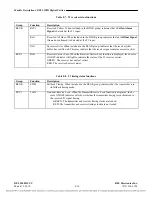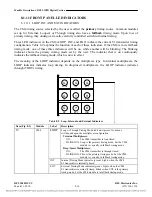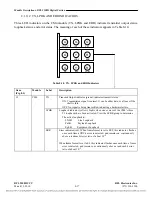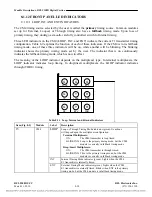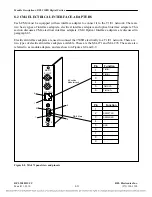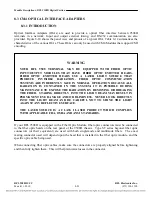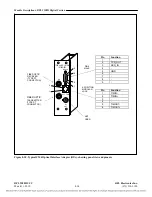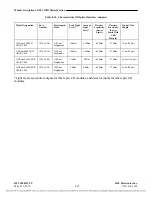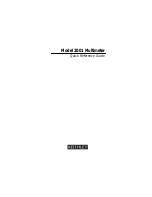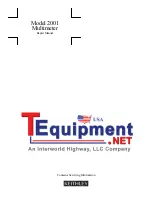
Module Descriptions, RFL 9508D Digital Section
8.1.9
T1 TEST JACKS
Each CM4 has two pairs of bantam jacks (
T1 IN
and
T1 OUT
) to provide test access to the T1 input
and output signals. Each pair consists of one equipment (
EQUIP
) jack and one monitor (
MON
) jack.
The two
EQUIP
jacks are used for out-of-service testing. The two
MON
jacks are designed for in-
service testing, so they are equipped with isolation resistors. Because of these resistors, the T1 signals
received and transmitted by the multiplexer can be monitored without significantly affecting their
levels. When terminated by 100 ohms, the signal level at the output of each
MON
jack, is about 20 dB
below that of the corresponding T1 input or output signal. T1 test sets are designed to automatically
adjust for this attenuation when operated in their monitor (MON) mode.
Table 8-3. T1 test and monitor bantam jacks
Item
(Fig. 8-5)
Module Label
Description
7 CM4
T1
OUT
EQUIP
Provides out-of-service test access to the CM4's T1 output. When
in use, this jack disconnects the CM4's T1 transmitter from the
T1 I/O connector on its MA-270R Module Adapter.
RFL 9508D UCC
RFL Electronics Inc.
T1
OUT
MON
Used for in-service, non-intrusive (resistor-isolated) monitoring of
the CM4's T1 output.
8 CM4
T1
IN
EQUIP
Provides out-of-service test access to the T1 signal received by the
CM4. When in use, this jack disconnects the CM4's T1 receiver
from the T1 I/O connector on its MA-270R Module Adapter.
T1
IN
MON
Used for in-service, non-intrusive (resistor-isolated) monitoring of
the T1 signal received by the CM4.
NOTE
In redundant applications, test equipment should be connected to the jacks of the
currently active common module. The inactive module is looped onto itself and its test
jacks provide access only to that looped-back signal.
NOTE
If your system uses fiber optic I/Os, the data at the bantam jacks is CMI encoded data
and not T1 or E1 encoded data. Monitoring the T1 or E1 signals via the test jacks
labeled “T1 OUT MON” or “T1 IN MON” on the front of the CM4 requires an RFL
CMI Converter. Refer to the CMI Converter Instruction Data Sheet for additional
information.
March 11, 2010
8-10
(973) 334-3100

